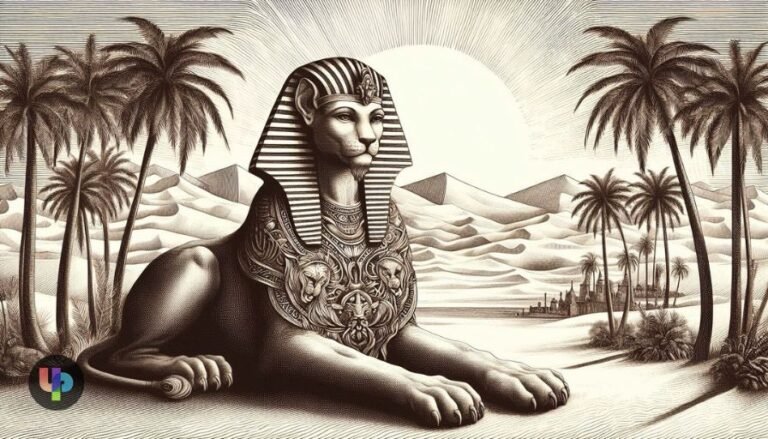The Sphinx has fascinated people for centuries, combining elements of both human and lion in one iconic figure. The keyword DrawingYz1syhsgv7e= Sphinx represents an artistic exploration of this mythical creature through drawing. Whether you’re a beginner or an experienced artist, learning to draw the Sphinx can be a rewarding challenge. This article provides a detailed guide on creating your own rendition of the Sphinx, incorporating key drawing techniques and inspirations.
Materials You Will Need
Before starting, it’s important to gather the essential tools for drawing:
- Drawing paper or sketchbook
- Pencils (ranging from 2H to 4B for shading)
- Eraser
- Ruler (for maintaining proportions)
- Optional: Colored pencils or markers
These tools will help you achieve the accuracy and depth required for rendering the intricate details of the Sphinx.
Step-by-Step Guide to Drawing the Sphinx
1. Sketch the Basic Structure
Begin by lightly sketching an oval shape for the Sphinx’s body, which represents the lion’s form. Draw another smaller oval on top to outline the head. These basic shapes will help you maintain the correct proportions. Keep the body stretched out as the Sphinx is typically depicted lying down.
2. Define the Head
Incorporate the Sphinx’s human-like face by drawing a circle inside the head shape to mark where the facial features will go. Next, draw a centerline down the middle to help you place the eyes, nose, and mouth symmetrically.
3. Draw the Facial Features
Add the almond-shaped eyes, keeping them slightly apart to reflect the Sphinx’s statuesque appearance. Sketch the nose with a narrow shape, blending smoothly into the face. The mouth can either be a simple curve or more detailed, depending on your preference.
4. Shape the Body and Legs
The Sphinx’s body mimics that of a lion. Use curved lines to outline the front legs, which should be positioned in a resting posture. Draw the legs forward and extend them away from the body. For the back legs, incorporate softer curves and draw them folded underneath the body. Don’t forget to add paws, with attention to the details of the toes.
5. Add the Headdress and Ears
The iconic headdress of the Sphinx, resembling an ancient Egyptian nemes, adds character to your drawing. Draw two lines starting from the head and flowing downwards to represent the headdress’s folds. For the ears, sketch two small triangular shapes that sit slightly behind the eyes.
6. Add Details to the Body
Now it’s time to enhance the Sphinx’s body. Add muscle definition on the legs and torso using soft, curved lines. The tail, often curled or resting alongside the body, should also be added in this step. Make sure to include shading along the legs, paws, and torso to create depth and dimension.
7. Refining the Face
Go back to the face and refine the details. Add more definition to the eyes, including shading for the pupils. Draw short lines for the eyebrows and add further texture to the nose and mouth. You can also use shading to give the face more depth and bring out the features.
8. Final Touches and Background
Assess your drawing for any final refinements. Make sure the proportions look accurate, and all elements are balanced. You can darken the final lines to emphasize certain features and erase any remaining guidelines.
For additional detail, consider adding a background—such as the Giza pyramids or a desert landscape—to place your Sphinx in a fitting context.
Techniques to Improve Your Drawing
To bring your Sphinx drawing to life, you can apply various shading techniques:
- Cross-hatching: This adds texture to areas like the lion’s body, creating the appearance of fur or rough skin.
- Gradient shading: Use softer strokes with a lighter pencil (like 2H) for subtle transitions between light and shadow, especially around the face and paws.
- Line variation: Thicker lines can be used for outlining the body and headdress, while finer lines highlight smaller details like facial features or textures.
Creative Ways to Personalize Your Sphinx Drawing
Drawing the Sphinx offers ample opportunity for creativity. You might want to:
- Add Egyptian symbols: Incorporate hieroglyphs or other symbols on the headdress or in the background to give the drawing an authentic feel.
- Coloring options: While the Sphinx is often depicted in sandy tones, feel free to use other colors for a more stylized or artistic version.
- Combine elements: Try blending aspects of other mythological creatures like griffins or phoenixes into your Sphinx drawing for a unique, hybrid design.
Conclusion
Mastering the DrawingYz1syhsgv7e= Sphinx is a fulfilling way to explore both artistic skills and the rich symbolism behind one of history’s most iconic statues. By following the step-by-step process outlined above and incorporating creative techniques, you’ll be able to create a stunning piece of art. Whether you choose to keep it simple or add your own flair, the Sphinx is a captivating subject that brings out the best in any artist.
